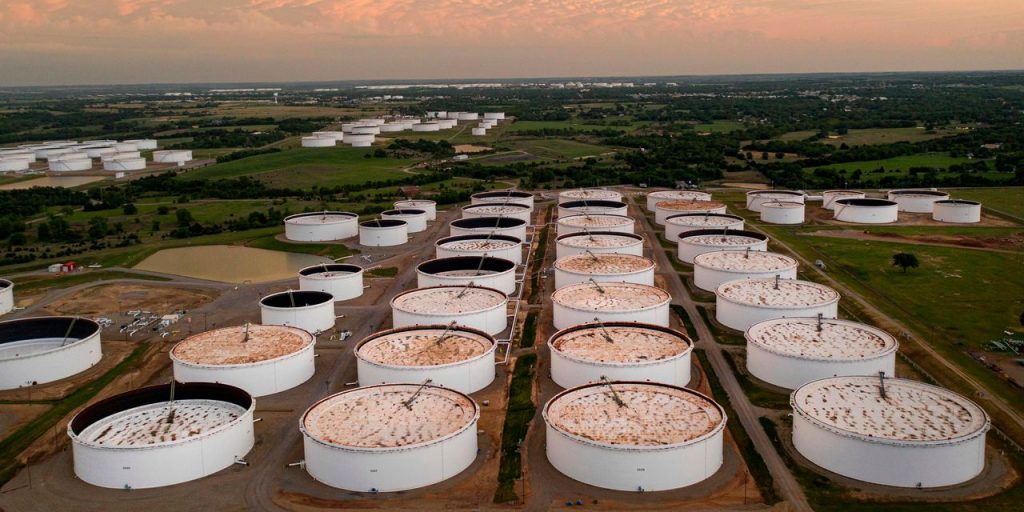Oil futures climbed on Wednesday, with a smaller-than-expected rise in the March consumer-price index reading and a potential refill of the U.S. Strategic Petroleum Reserve helping to lift U.S. prices to their highest settlement since November.
Oil traders also digested weekly data showing a gain in U.S. crude and declines in gasoline and distillate inventories.
Price action
-
West Texas Intermediate crude for May delivery
CL.1,
-0.64%CL00,
-0.64%CLK23,
-0.64%
rose $1.73, or 2.1%, to settle at $83.26 a barrel on the New York Mercantile Exchange, the highest front-month contract finish since Nov. 16, according to Dow Jones Market Data. -
June Brent crude
BRN00,
-0.57%BRNM23,
-0.57%,
the global benchmark, gained $1.72, or 2%, to $87.33 a barrel on ICE Futures Europe, for the highest settlement since January. -
Back on Nymex, May gasoline
RBK23,
-1.20%
added 0.3% to $2.87 a gallon, while May heating oil
HOK23,
-0.47%
rose 1.3% to $2.70 a gallon. -
May natural gas
NGK23,
+4.21%
declined by nearly 4.3% to $2.09 per million British thermal units.
Market drivers
After trading within their “tightest five day range since mid-2021 over the past week,” crude prices finally broke out of their narrow range following the release of U.S. inflation data, said Troy Vincent, senior market analyst at DTN.
Consumer prices rose 0.1% in March, a bit below the 0.2% increase forecast by economists polled by the Wall Street Journal. The yearly rate of inflation slowed to 5% from 6%.
For markets, the news is a “bit of a welcome sign,” said Stewart Glickman, energy equity analyst at CFRA Research.
“We got a moderating CPI number, which could suggest that we can avoid more draconian rate hikes in the future,” he told MarketWatch. “So at least on the demand side of the oil equation, things look a little better … and [that] probably reduces the odds of a sustained malaise in oil prices.”
Read: Fed officials at March meeting were keenly worried about impact of bank stress on economy
The U.S. dollar
DXY,
+0.10%
also weakened after the CPI data, providing support to dollar-denominated commodity prices.
“Oil is also influenced by the dollar but OPEC+ support is more important, along with robust demand from China and Europe — as it looks for substitutes for oil,” said Jay Hatfield, chief investment officer at Infrastructure Capital Management. “Oil traders will be focused on the progress of demand from China as well as OPEC compliance with the voluntary [oil production] cuts.”
Read: Global oil production growth will soon ‘shift’ away from OPEC, says EIA
Meanwhile, U.S. Energy Secretary Jennifer Granholm reportedly said on Wednesday that the Biden administration plans to refill the nation’s Strategic Petroleum Reserve soon.
The announcement probably was meant to “send a message” to the Organization of the Petroleum Exporting Countries, which was displeased when Granholm previously said the administration would not be refilling the reserve anytime soon, Phil Flynn, senior market analyst at the Price Futures Group, told MarketWatch.
Last month, reports said Granholm had warned it could take years for the U.S. refill the reserve. A few days later, she said the U.S. could start buying back crude for the SPR late this year.
The Biden administration last year announced the emergency sale of 180 million barrels of SPR crude to help lower gasoline prices and has said it would refill the reserve when oil prices fell to around $70 a barrel.
Supply data
Oil prices extended their gains after the Energy Information Administration on Wednesday reported that U.S. commercial crude inventories rose by 600,000 barrels for the week ending April 7. That followed declines in each of the last two weeks.
On average, analysts forecast a climb of 700,000 barrels, according to a survey by S&P Global Commodity Insights. The American Petroleum Institute late Tuesday reported that crude inventories rose by nearly 380,000 barrels last week, according to a source citing the data.
The minor crude build reported by the EIA was “driven by a combination of factors: lower exports — which is a typical trend at the start of each month, a tick higher in production, a minor drop in refining activity and an SPR release of 1.6 million barrels,” said Matt Smith, lead oil analyst for the Americas at Kpler.
The EIA report showed weekly inventory declines of 300,000 barrels for gasoline and 600,000 barrels for distillates. The analyst survey had forecast a supply decrease of 900,000 barrels for gasoline and an increase of 2 million barrels for distillates.
Crude stocks at the Cushing, Okla., Nymex delivery hub fell by 400,000 barrels for the week, the EIA said, while total domestic petroleum production climbed by 100,000 barrels to 12.3 million barrels a day.
Read the full article here




